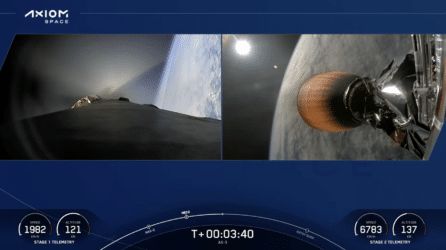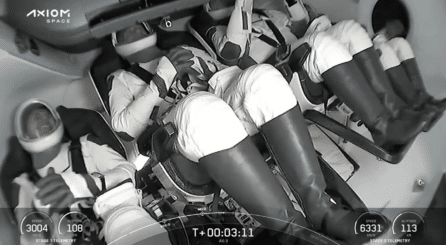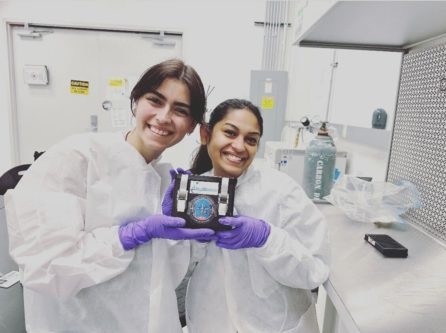Brain Disease Research Gets a New Backdrop: Space
NewsIf you picture where brain disease research takes place, you might conjure an image of a laboratory full of white-coated scientists tinkering with microscopes and pipettes. You probably wouldn’t imagine a spacecraft hurdling thousands of miles per hour through the exosphere, but this is exactly where one of NYSCF’s latest projects is establishing residence.
The unique conditions of space provide unprecedented opportunities to study human biology, and in collaboration with the National Stem Cell Foundation (NSCF), BioServe Space Technologies, and Axiom Space, NYSCF scientists have sent brain cells aboard Axiom Mission 3 (Ax-3) to learn more about how cells behave, how to model disease, and how to make spaceflight safer for astronauts. We spoke with NYSCF Staff Scientist Kriti Kalpana, PhD, about this latest mission and what’s next for the project.
What are we hoping to learn by sending cells to space?
“There are a couple of topics we are hoping to explore here,” said Dr. Kalpana. “First, we know that when astronauts remain in microgravity for extended periods of time, they experience biological changes in their retinas, bones, muscles, etc. To make space flights safer, we need to better understand their impact on the body.”
“Secondly, we’ve amassed an incredible amount of data over the past few years of carrying out these missions that suggest microgravity affects brain cells in a unique way,” she continued. “This microgravity may prompt cells to show some exacerbated features that are similar to that we see in neurodegenerative diseases, making it an advantageous environment for studying them.”

“In our experiments, we are studying different types of brain cells: neurons (the vulnerable cells in neurodegenerative diseases) and microglia (immune cells that play a major role in neuroinflammation and ultimately damage the neurons),” noted Dr. Kalpana. “Because previous experiments in mice and astronauts are pointing at increased inflammation in space, we are interested in studying whether this is also true for neuroinflammation, and whether we can therefore better understand how microglia are driving neurodegeneration in disease.”
What exactly will this mission entail?

“In this mission, we send organoids [3D models of human brain tissue made from stem cells] to the International Space Station to complete experiments that will validate our results from previous missions,” explained Dr. Kalpana. “We have organoids made from people with multiple sclerosis and Parkinson’s disease (as well as healthy controls) both onboard the space flight as well as here on Earth for comparison.”
“The mission should last about 15 days, after which we will receive our materials back [via a splashdown where a capsule parachutes into the ocean], and we will be able to compare the cells that were in space to the ones that stayed here to look for differences in their biology and/or impacts from disease.”
What was it like to attend the launch?
“It was so unreal – I’m still processing,” laughed Dr. Kalpana. “Seeing the launch and the fireball that it creates was unlike anything I’ve ever experienced. You can feel the sonic boom hit you as well – although I heard from some others that the humidity might have absorbed it a bit on our launch day.”

“And even leading up to the launch, it was so cool to go to the International Space Station labs and prepare everything for takeoff. We had dedicated lab space with everything set up for us and I got an official NASA badge, which was neat. Our project is called ‘Cosmic Brain Organoids’, and we would see it being flashed across screens around the headquarters along with other experiments that were being carried aboard, which was exciting. The size and scope of everything there was just beautiful.”
Why is it important to have collaborations like this in science?
“Our work is a collaboration between several groups, with people from all over the country. We began this project back in 2018, and our teams have expanded and evolved a lot since then, with a lot of people from different backgrounds helping provide feedback and ensure every mission runs smoothly. I think science works best when it is collaborative, and this feels very much like a dream team – I’m happy to be a part of it.”
Learn more about this work:
NYSCF Scientists Talk Space, Stem Cells, and their Pioneering Study of MS and PD
Valentina Fossati Explains Why We Sent Patient Cells to Space